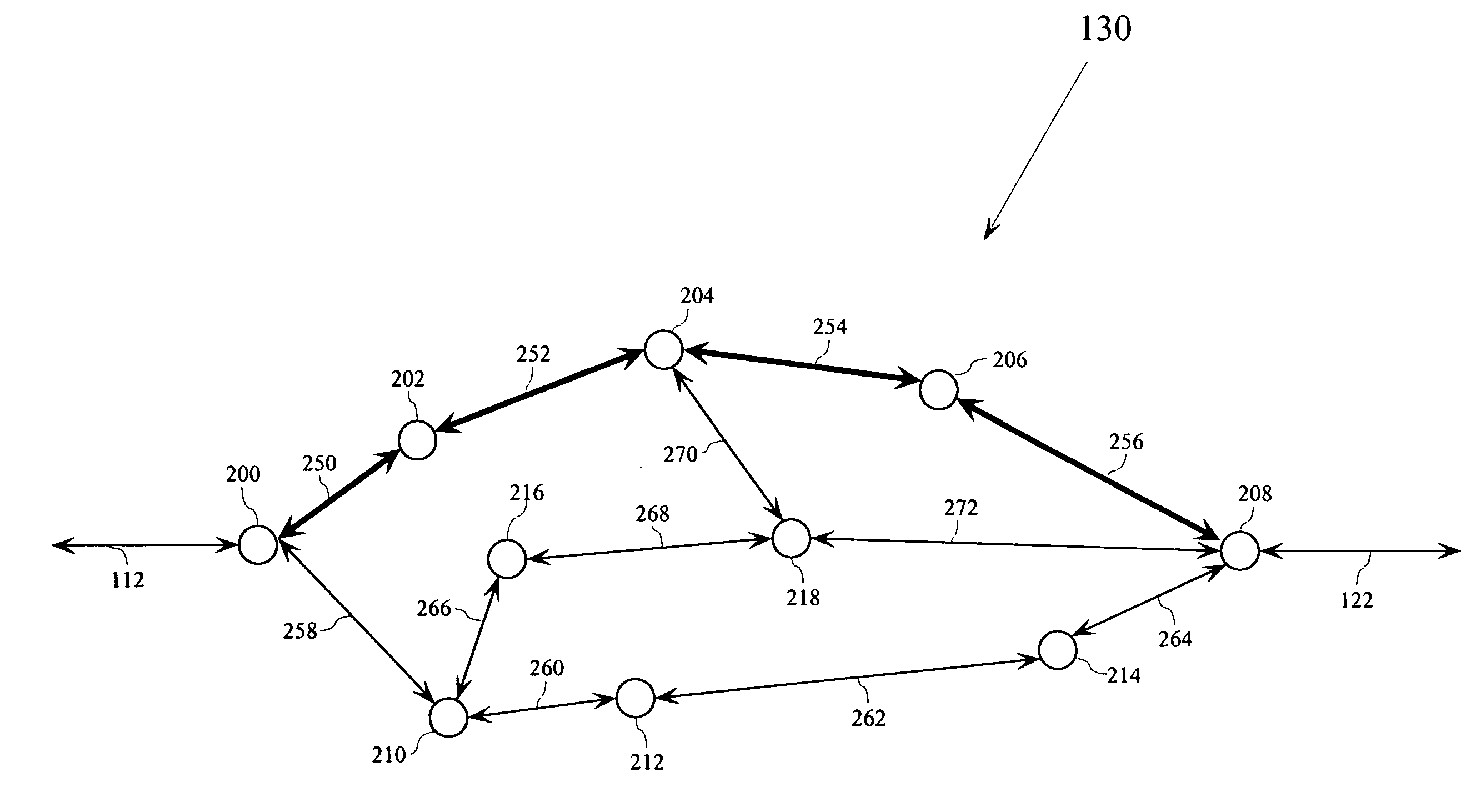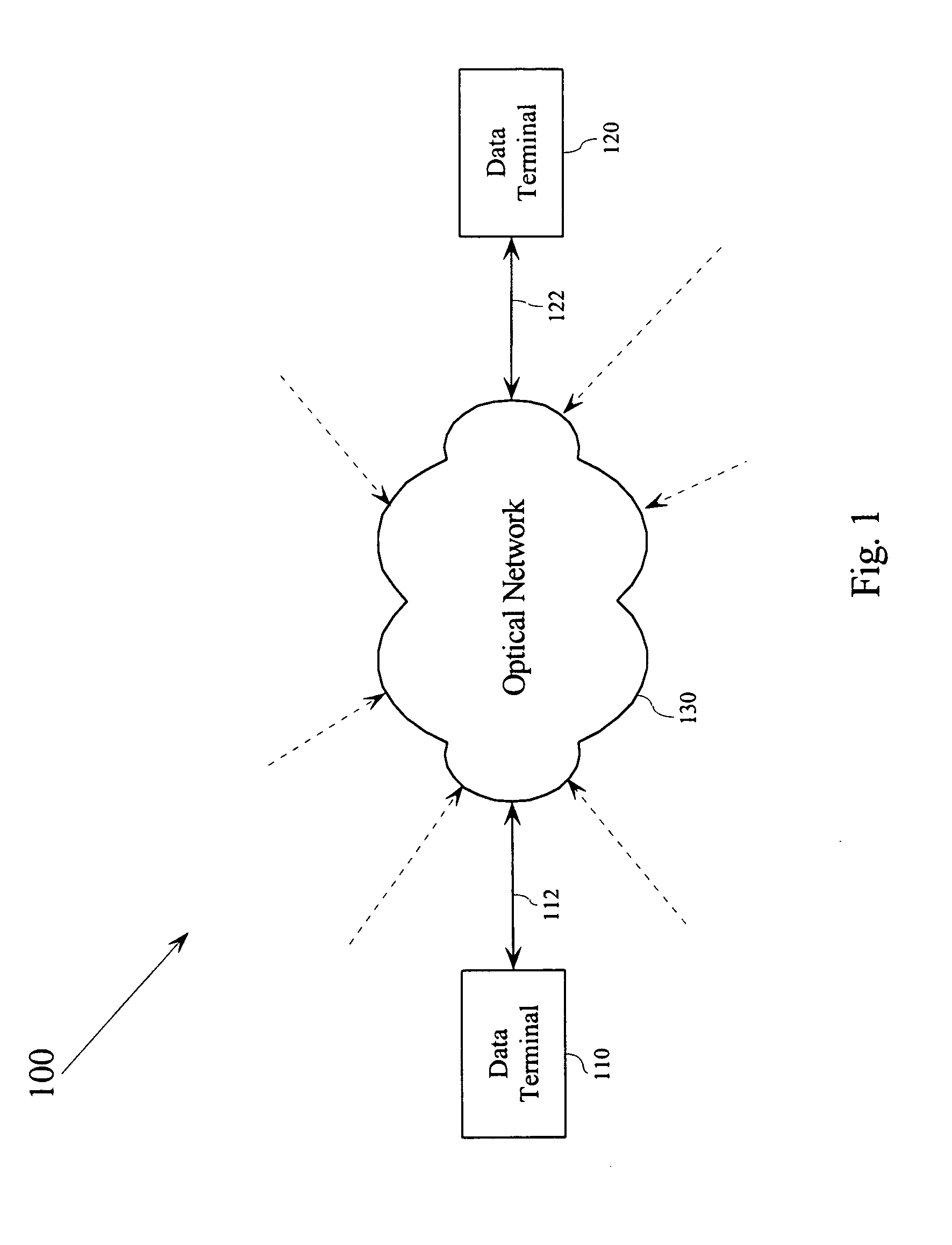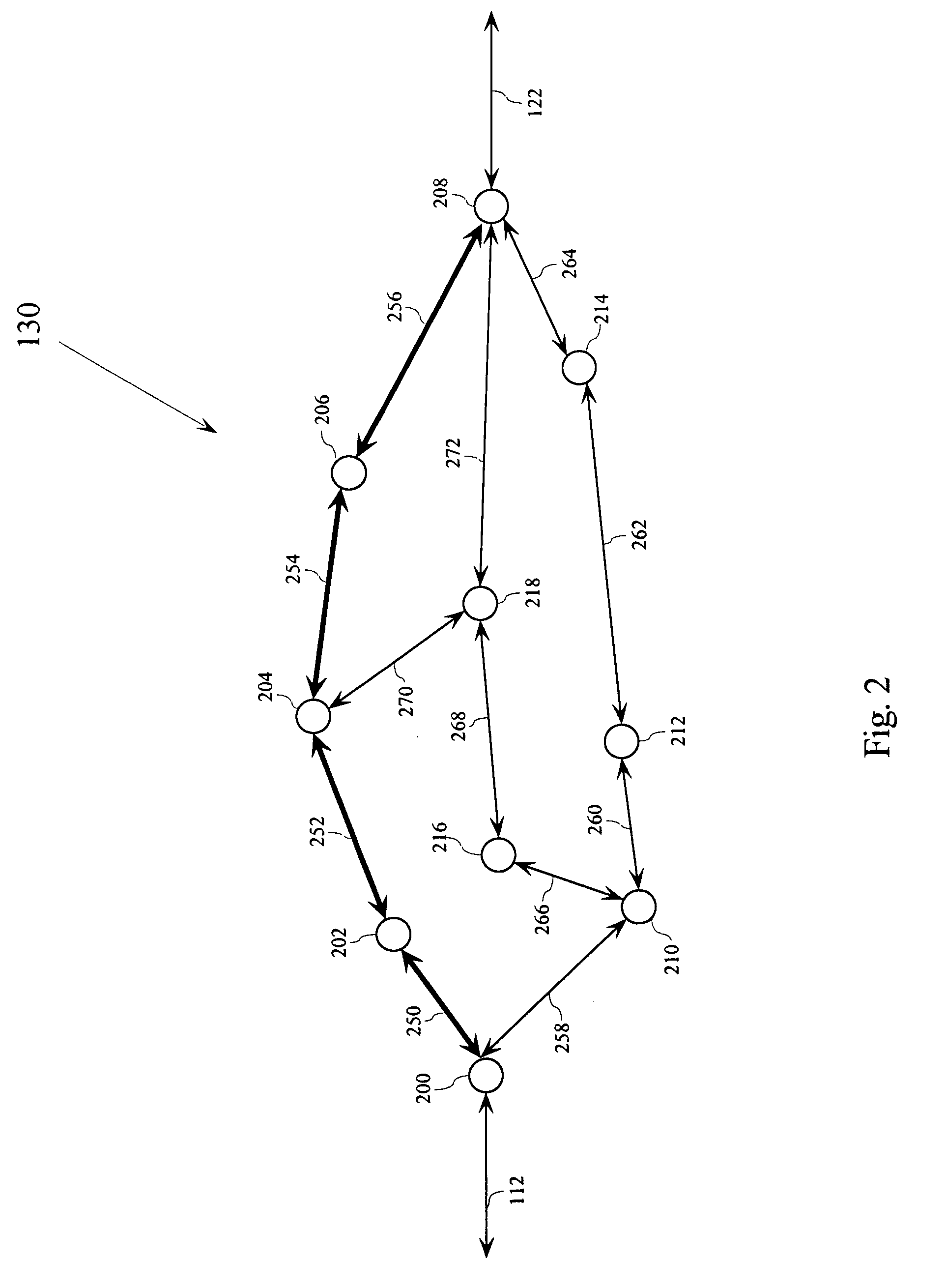Methods and systems for fast restoration in a mesh network of optical cross connects
a mesh network and network failure technology, applied in the field of methods and systems for quickly restoring communication after a mesh network failure, can solve the problems of inefficient communication vehicles of sonet rings, loss of commerce and other benefits for network subscribers, and significant loss of revenue for network owners, etc., to achieve cost-effective, efficient use of available resources, and communication restoration
- Summary
- Abstract
- Description
- Claims
- Application Information
AI Technical Summary
Benefits of technology
Problems solved by technology
Method used
Image
Examples
Embodiment Construction
[0016]Because of recent advances and subsequent deployment of dense wavelength division multiplexing systems, a new network layer, known as the optical layer has emerged. Currently, Synchronous Optical Network (SONET) rings provide the primary technology for optical layer communication and restoration from network failures. The SONET standards are predefined standards especially designed for optical communication systems and are described in detail by the ANSI T1.105 documentation. While SONET rings can quickly restore a failed communication channel, SONET rings are inefficient communication vehicles compared to “mesh” network topologies.
[0017]FIG. 1 shows an exemplary block diagram of a communication system 100. The communication system 100 includes a first data terminal 110 connected to an optical mesh network 130 through a first data link 112, and a second data terminal 120 connected to the optical mesh network 130 through a second data link 122. The optical mesh network 130 can ...
PUM
 Login to View More
Login to View More Abstract
Description
Claims
Application Information
 Login to View More
Login to View More - R&D
- Intellectual Property
- Life Sciences
- Materials
- Tech Scout
- Unparalleled Data Quality
- Higher Quality Content
- 60% Fewer Hallucinations
Browse by: Latest US Patents, China's latest patents, Technical Efficacy Thesaurus, Application Domain, Technology Topic, Popular Technical Reports.
© 2025 PatSnap. All rights reserved.Legal|Privacy policy|Modern Slavery Act Transparency Statement|Sitemap|About US| Contact US: help@patsnap.com



